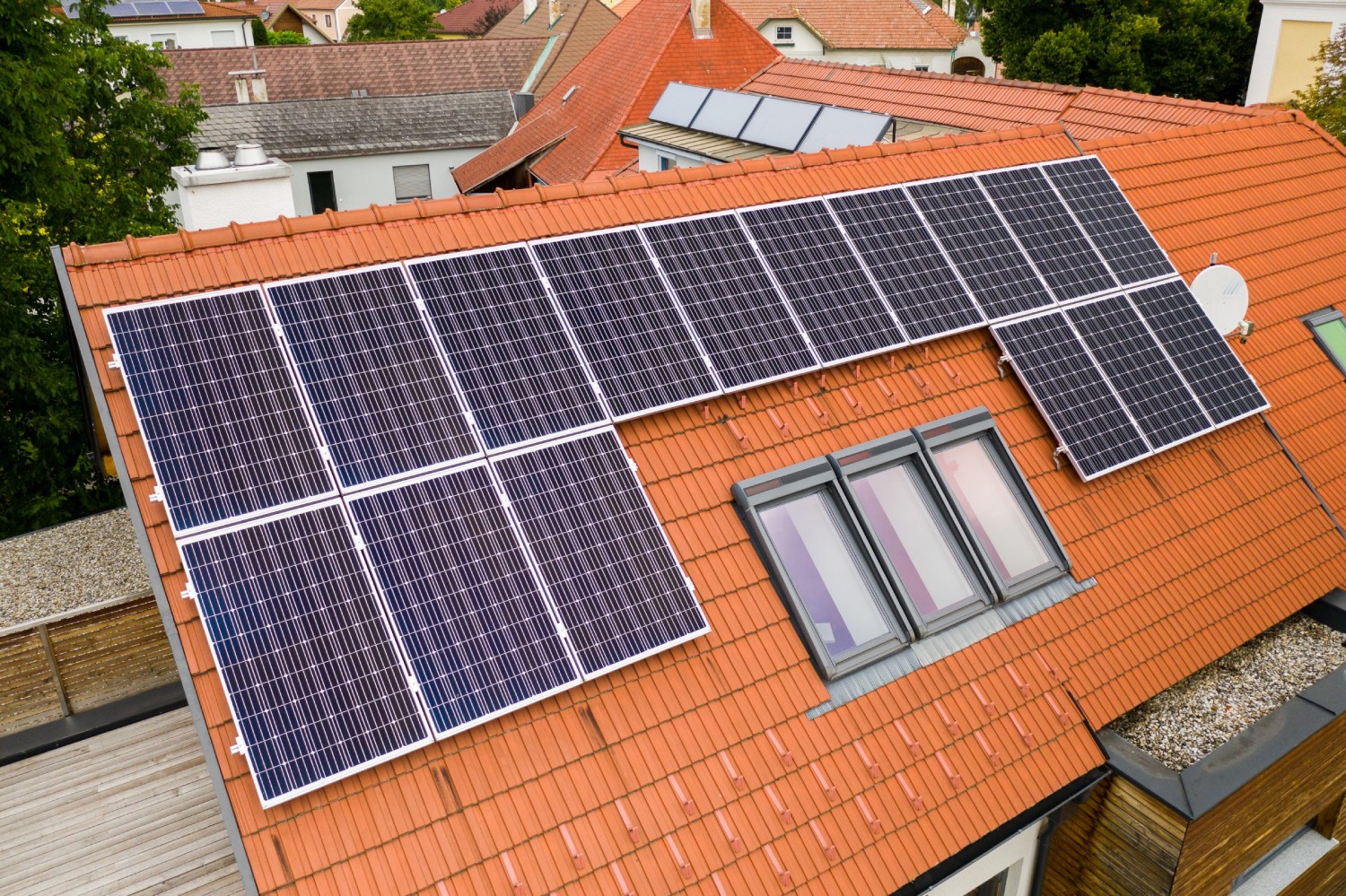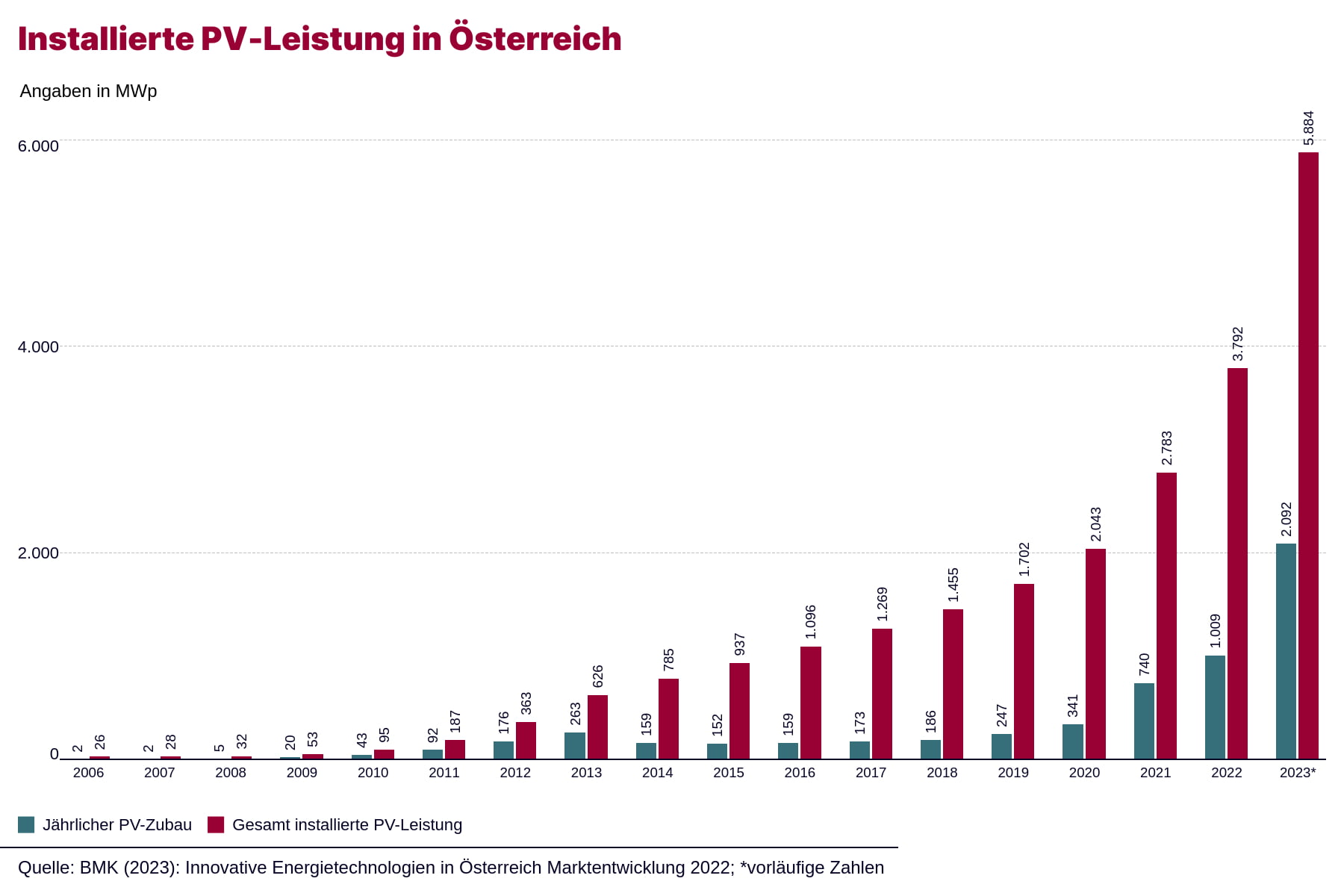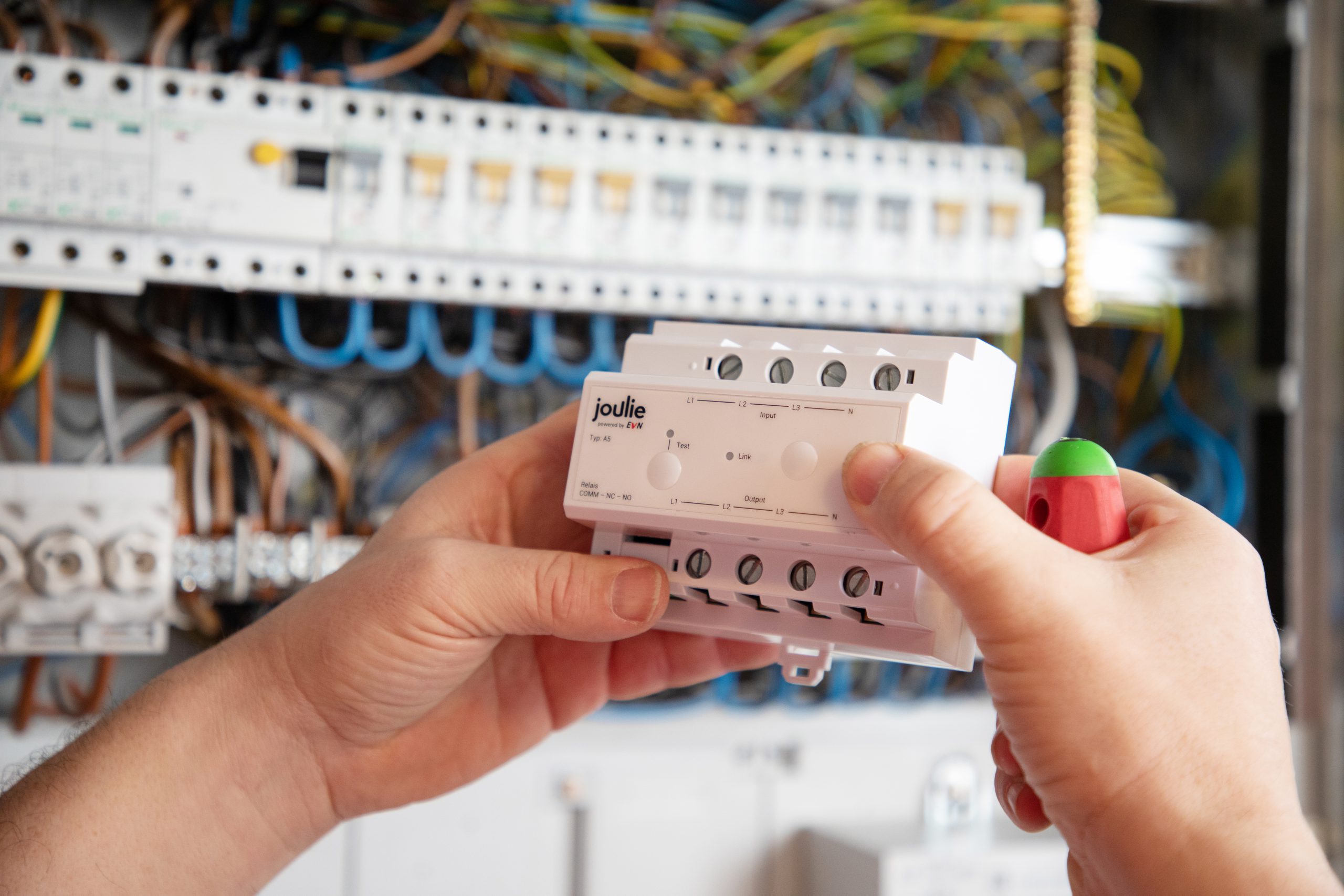How to successfully expand photovoltaics
Flexibilization as the key to the success of the energy transition: 3,000 households are participating in the "Green the Flex" project to develop an intelligent solution to adapt electricity consumption to the timing of solar power generation. This is an essential prerequisite for driving forward the expansion of renewable energies.

Photovoltaic boom: there are almost 100,000 solar installations in Lower Austria alone. For further expansion to succeed, intelligent networking of generation with local consumers is required. © EVN / Severin Wurnig Studio Totale
Vienna, 5 March 2023 – Solar power is booming: last year alone, photovoltaic systems with a total output of 2,000 megawatts were newly installed across Austria. At the beginning of 2024, 5,884 megawatts (MWp) of PV capacity had been installed nationwide. A quarter of all systems are located in Lower Austria. So far, 98,000 systems have been installed there, 35,300 of them just last year. And this is by no means the end of the story, as PV expansion will continue to be driven forward on a massive scale: There are plans to quadruple the total installed capacity nationwide to a total of 21,000 megawatts peak by 2030. Photovoltaic systems are then expected to supply 21 terawatt hours of energy per year – this corresponds to almost a third of Austria’s total electricity consumption of currently 71 terawatt hours per year.
Flexibilization stabilizes the power grid
The electricity grid is a sophisticated system in which electricity generation and consumption must always be in balance. The switch to a 100% renewable energy supply therefore poses enormous challenges for both electricity producers and the grids. If there is massive overproduction in the short term, for example due to solar power during midday, this can lead to serious problems. Experts from the electricity industry therefore always emphasize that the expansion of the electricity grids must keep pace with the expansion of renewable energy production. In addition, power generation and power consumption must be harmonized in order to ensure balance in the energy system. This can be achieved by either consuming the energy generated as locally as possible immediately and at the same time as it is generated or by storing it flexibly. Bringing these solutions into the everyday lives of electricity customers is an essential part of fundamental strategic planning for energy companies.

Photovoltaic expansion in Austria, Chart: BMK
3,000 households with intelligent control
“Green the Flex” is a cooperation project between the Green Energy Lab, CyberGrid, EVN and the European Union. The aim of the project is to shift the energy consumption of typical large appliances, such as heat pumps, battery storage or electric cars, to times when a particularly large amount of energy is being generated. By optimizing the use of solar power, i.e. in particular by adapting consumption to availability, an annual load shift of 4,400 megawatt hours of electricity (MWh) is to be achieved. By 2025, around 3,000 households in Lower Austria will be participating in the project. This will relieve the burden on the electricity grid and also save 3,500 tons of CO₂ emissions per year.
Optimization assistant saves money and supports research
All households in Lower Austria with a solar installation can take part in the “Green the Flex” project. In doing so, they support research in gaining valuable experience in order to develop customer-friendly solutions for widespread use. PV system operators can also save money by maximizing the self-consumption of their self-generated solar energy and thus having to buy less electricity from the grid. The “Optimization Assistant” energy management tool is free of charge for private households as part of the project and networks the PV system with consumers such as heat pumps, electric boilers and electric car charging stations to create an intelligent overall system. This allows the operation of the appliances to be adapted to the energy available at any given time. Kernstück der durchdachten Lösung zur Eigenverbrauchs-Optimierung ist ein intuitives Kundenportal, welches die Energieflüsse im Haushalt in Echtzeit visualisiert. The user can see at a glance how much electricity is being generated, consumed and fed into the grid.
Michael Stieger-Bäck from the district of Gänserndorf has been using the Optimization Assistant for a year now. The aim was to better synchronize the self-generated electricity from his photovoltaic system with the energy requirements in his household. In summer in particular, he can use the surplus PV energy produced for the heat pump’s domestic hot water tank, which means he has to draw less energy from the grid. Stieger-Bäck is convinced of the benefits of the tool and plans to expand it: “Calculated over the year, I have saved a good 25 percent of my energy costs for the heat pump. I use the solar energy in my own home and will be adding a wallbox to the system next year.
People like Stieger-Bäck are thus also supporting the sustainable transformation of the energy system, emphasizes project manager Silke Paizoni: “With the optimization assistant, participants can not only reduce their individual electricity costs, but also actively contribute to the energy transition!”

A small box with a big impact: the Joulie Box provides intelligent networking between the solar system, any existing battery storage and consumers in the home (© EVN / Raimo Rumpler)
New participation option: battery storage optimization
As part of the project “Green the Flex“ an interface was also developed that enables the use of battery storage systems to support the Austrian energy system in order to balance out fluctuations between generation and consumption. Consumption peaks usually occur in the morning hours, followed by excessive feed-ins and corresponding energy surpluses in the power grid at midday due to high PV power generation. To compensate for this, the battery storage system in the household is charged via the grid with renewable electricity from wind or hydropower during the night. In the morning hours, the energy supply is then provided by the energy from the storage system and the household’s own PV generation. At midday, when PV power generation usually reaches its peak, there is sufficient capacity available in the battery storage system again: The electricity can therefore be stored in the battery for the afternoon and evening hours instead of feeding it into the grid. This means that the battery storage system is used optimally throughout the day. Peak loads when drawing and feeding electricity into the grid are reduced.
These processes are controlled fully automatically based on the forecast generation of the photovoltaic system and consumption. The actual function of the battery storage system and therefore the self-consumption rate remains unaffected. Depending on the forecast, the charging of the storage system is either slightly postponed or additional charging takes place on bad weather days without photovoltaic generation – automatically and without any loss of convenience.
Individual energy management as a success factor for PV expansion
By shifting energy demand to times of high solar power generation, the overall grid is relieved. In order to reduce the use of fossil fuel power plants and the associated CO₂ emissions, solutions like this are needed to smooth out peak loads in consumption and energy feed-in. “The strong demand for renewable energies presents the entire energy system with complex challenges. Together with many interested Lower Austrians, this project will enable us to develop forward-looking solutions for the individual energy management of tomorrow”, Paizoni emphasizes the relevance for everyone involved. The “Green the Flex” research project runs until 2028, and interested households can still apply until the beginning of 2025 at www.joulie.at/gtF to register for free participation.
About Green the Flex
PV expansion in Austria is booming. A quarter of all systems are located in Lower Austria, the largest federal state in terms of area. Around 98,000 solar installations are already feeding electricity into the grid there and around 3,000 to 4,000 more are added every month. Last year alone, 35,300 new solar power plants were installed, around twice as many as in 2022. The Lower Austrian electricity grid is therefore ideally suited to testing the intelligent synchronization of PV power generation with local consumers on a large scale. By 2025, 3,000 private households will be intelligently networked as part of the “Green the Flex” project in order to save a total of around 3,500 tons of CO₂ per year and shift 4,400 MWh of load. This will significantly reduce peak loads in the grid and ultimately allow more PV systems to be connected. The “Green the Flex” project is funded by the European Commission via the EU Innovation Fund. It is being implemented with the support of the Green Energy Lab research initiative.
About Green Energy Lab
Green Energy Lab is a research initiative for sustainable energy solutions. With the core regions of Vienna, Lower Austria, Burgenland and Styria, the Green Energy Lab has a test market with five million end consumers, making it Austria’s largest innovation laboratory for a sustainable energy future. More than 350 companies and institutions from research, business and the public sector are developing demand-oriented, scalable energy solutions in the Green Energy Lab together with the four provincial energy suppliers Wien Energie, EVN, Burgenland Energie and Energie Steiermark – from prototype to market maturity. The Green Energy Lab is part of the Austrian innovation offensive “Vorzeigeregion Energie” of the Climate and Energy Fund. By 2025, over 150 million euros will be invested in innovative projects as part of the Green Energy Lab.
Here you will find more information about the Green the Flex project.
Contact
Ludwig Fliesser
Communications Manager
T: +43 676 471 93 47
E: ludwig.fliesser@greenenergylab.at
